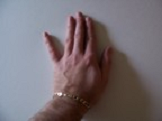Has this Ever Happened to You?
You’re jamming with a friend and he or she plays a guitar scale that you know fairly well. The strange thing is you notice that your buddy uses a completely different guitar scale fingering than you were taught.
Or, what about this?
You look up a scale fingering in a few guitar scale books and see that each book shows different ways to play the same scale.
What gives? Who’s right?
How Do You Know Which Guitar Scale Fingerings are Correct?
The guitar is an interesting beast.
Just like the piano, it has a long and diverse history. However, over the years piano technique has become pretty much standardized.
This means that most pianists will play a C major scale the exact same way. On the guitar however as you’ve probably already discovered, it’s very different. If you ask five guitarists to play the C major scale you’ll probably be amazed and perhaps even shocked at what you get.
On the piano as you move to the left, the notes get lower in pitch. Move to the right and the notes get higher.
On the guitar you can move across the strings to get higher or lower pitched notes. Or, you can move up or down the fretboard to produce higher or lower pitched notes.
Something else to consider is the presence of unisons. A unison is simply two notes of identical pitch and letter-names. The note C on the first fret of the second string can also be played on the third, fourth, fifth and sixth strings. You can play this C on the first fret of the second string, on the fifth fret of the third string, on the tenth fret of the fourth string, on the fifteenth fret of the fifth string, or on the twentieth fret of the sixth string. On the piano this note can only be played on one key. So on the guitar the million dollar question is: “which C should you use in that scale?”
Don’t Worry
By now you’re starting to understand a little bit about what we are dealing with here. The good news is you don’t really have to worry about any of this.
Over time different systems have evolved for playing guitar scales.
So Many Different Guitar Scale Approaches…So Little Time
What you need to know is that there are many different but overlapping approaches to guitar scale fingerings. The confusion lies in the fact that guitar technique and guitar scale fingerings are not really standardized.
Classical guitarists tend to use an older system for playing guitar scales, while contemporary guitarists will use newer systems that are based around five or seven fingerings.
All of the systems for guitar scale fingerings work. Each has its own distinct advantages and disadvantages. For every great guitar player you find that uses one guitar scale fingering system, you can find another great guitarist that uses a different system.
This explains why you can find the major scale shown many different ways in guitar scale books. One book might be based on one system while another guitar scale book might use a different guitar scale fingering system.
So What is the Best Guitar Scale Fingering System?
This I’ll answer in part 2 of this post…






